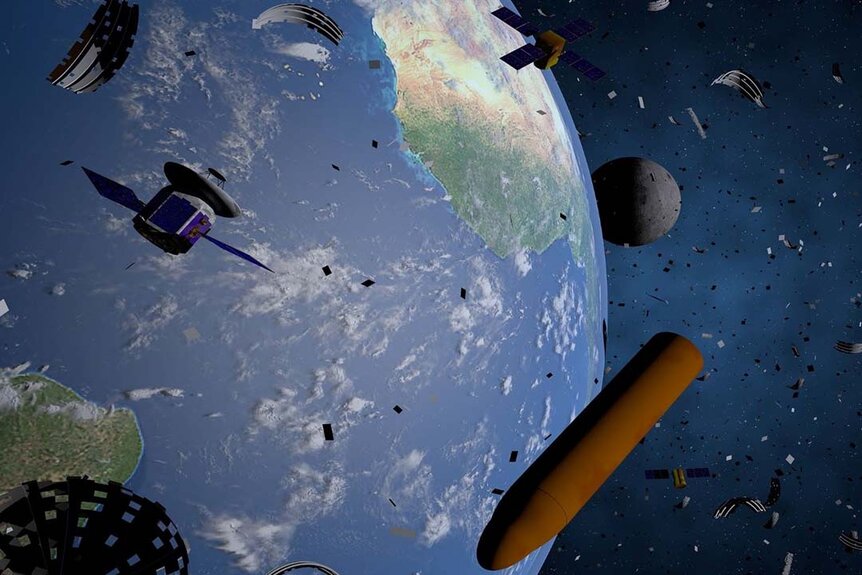Create a free profile to get unlimited access to exclusive videos, sweepstakes, and more!
The Atmosphere Is Polluted with Pieces of Burnt Up Spacecrafts
And we're not sure what it might mean.
If we want our species to survive long-term, it might be a good idea to spread out a little bit. The threat of asteroid impact doesn’t loom as large as it once did, thanks to a concerted effort to map the positions of large impactors and the success of the DART mission at changing an asteroid’s orbit. Still, it’s only a matter of time before some species-threatening disaster strikes and it wouldn’t hurt to have our eggs in a few baskets when that happens.
SYFY's The Ark (streaming now on Peacock) takes this philosophy to its logical extreme by sending a crew of astronauts, a century from now, on an ark ship to a planet orbiting the star next door. Getting to a point where we’re regularly sending people on interplanetary trips (not to mention interstellar) will require a boom in space exploration, filling the sky with all manner of satellites, probes, stations, and other spacecraft. If the activity of the last couple years is any indication, that boom is in full swing, and while more people might successfully get into orbit as a result, the increase in spacecraft might be polluting the sky back home.
When Spacecraft Burn Up, They Have to Go Somewhere
A recent study led by Dan Murphy, an adjunct professor in the Department of Earth, Atmospheric, and Planetary Sciences at Purdue University and researcher at the National Oceanic and Atmospheric Administration (NOAA), highlights a rise in certain pollutant metals in Earth’s stratosphere. The study, published in the Proceedings of the National Academy of Sciences, traced those metals back to discarded spacecraft burning up upon reentry.
RELATED: Boom! DART Changed The Orbit of Asteroid Dimorphos Even More Than We'd Hoped
Of course, spacecraft aren’t the only things that burn up in the atmosphere. Little bits of rock, metal, ice, and other materials left over from the formation of the solar system regularly smash into the atmosphere and disintegrate. A 2021 study crunched the numbers and found that an estimated 14 tons of cosmic material add themselves to the Earth system every single day. The vast majority of that stuff is tiny and burns up before it ever gets close to the ground.
As those micrometeorites are vaporized, their component parts get added to the chemical soup of the upper atmosphere. As they cool, they join with other material in the atmosphere, forming new molecules known as meteorite smoke. Scientists keep an eye on the meteorite smoke in the atmosphere to learn about the overall composition of stuff in our solar system, but a little while back they noticed the signature was changing.
“Scientists recently started noticing that the chemical fingerprint of these meteoritic particles was starting to change, which made us ask, ‘Well, what changed?’ because meteorite composition hasn’t changed. But the number of spacecraft has,” said study author Dan Cziczo, in a statement.
Stratospheric Spaceship Pollution Likely to Get Worse
Studying the stratosphere is no easy task. It lies quietly, several miles above the surface of the Earth, where even aircraft rarely tread. To find out what’s going on up there, researchers strapped a suite of instruments to the nosecones of a couple of high-tech airplanes and sent them up there to get samples. Instruments were strapped to the nose because that’s the place of least disturbance from the aircraft itself.
Two separate teams took two sets of data, one from the skies over Alaska and the other over the continental United States. The first team used a WB-57 aircraft to fly 19 kilometers (11.8 miles) above the surface of the Earth and scoop out a sample of the stratosphere. The other team used an ER02 to do the same.
RELATED: A Real Life Tractor Beam for Cleaning Up Space Junk
Measurements found the usual meteorite smoke alongside some other materials with seemingly artificial origins. Researchers found more than 20 chemical components in the stratosphere, including aluminum, lithium, copper, and lead with ratios that match artificial spacecraft. At present, about 10% of large sulfuric acid particles — the stuff that allows the ozone layer to protect us from UV radiation — are contaminated with aluminum and other spacecraft metals. Researchers estimate that up to half of stratospheric particles could be contaminated in the next few decades as the rate of space exploration increases.
The impact of polluting the stratosphere with ground up spaceships is unclear, but the last time we unintentionally messed with the stratosphere we punched a hole through the ozone layer with hairspray. So, it’s probably worth paying attention to. We want to be able to travel the stars, but not at the expense of dumping cosmic exhaust fumes into the living room on our way out the door.
Catch the complete first season of The Ark, streaming now on Peacock!




































